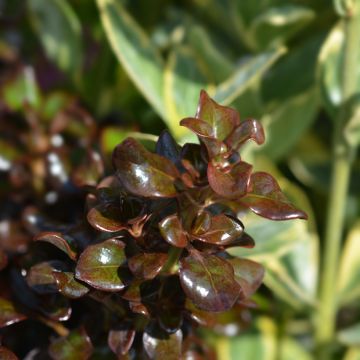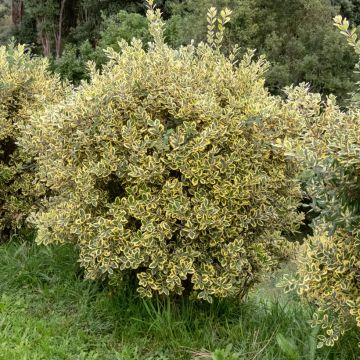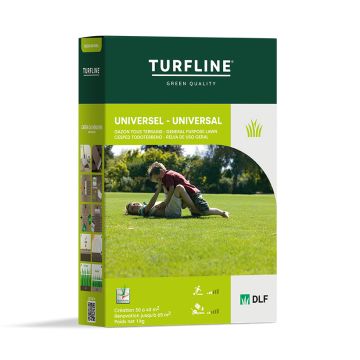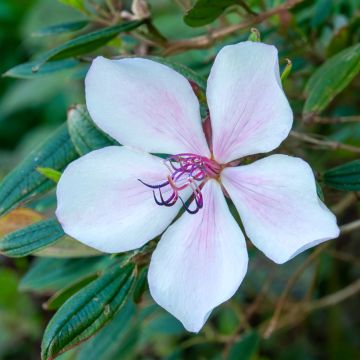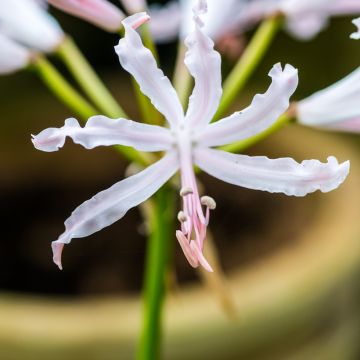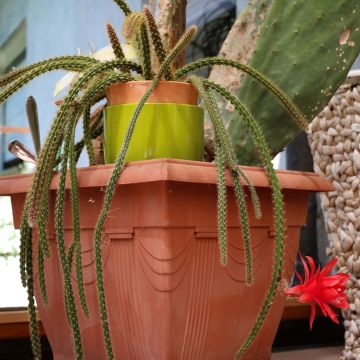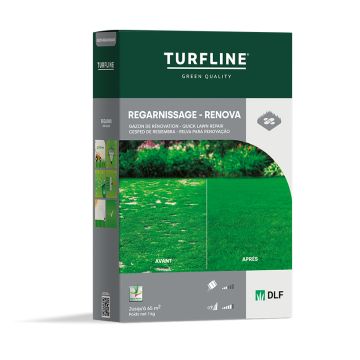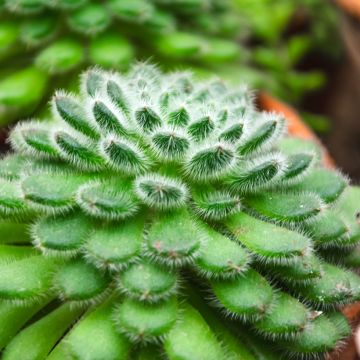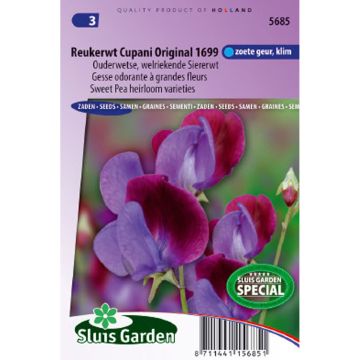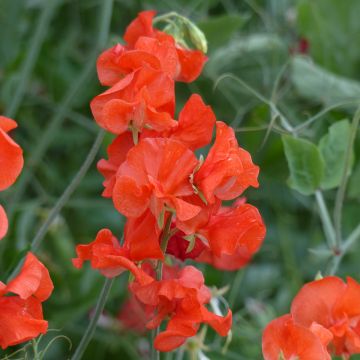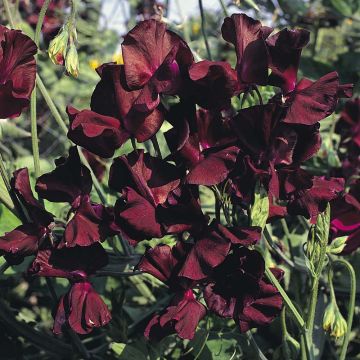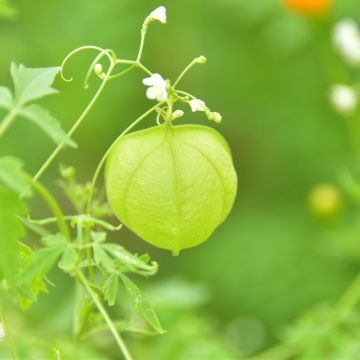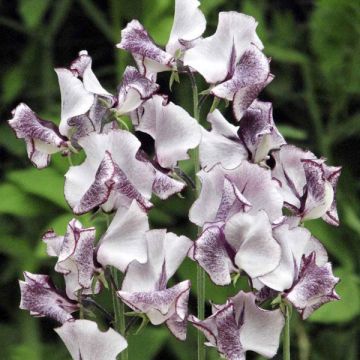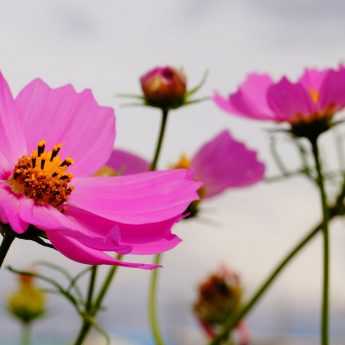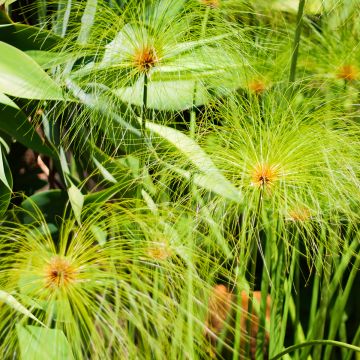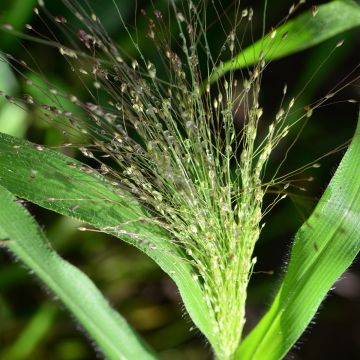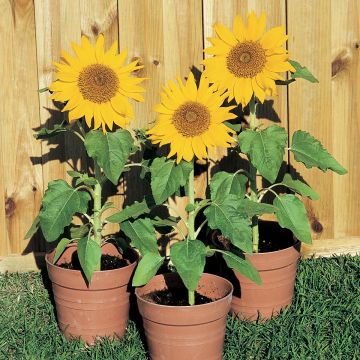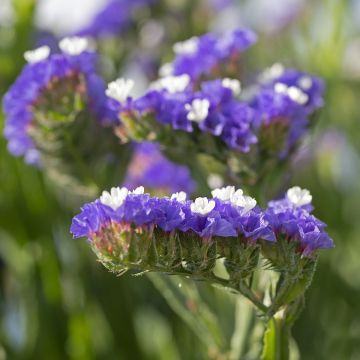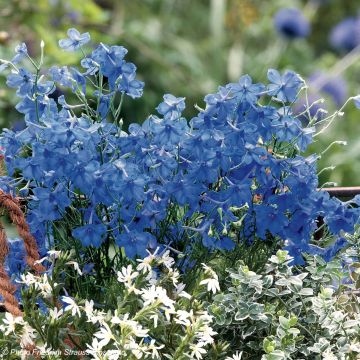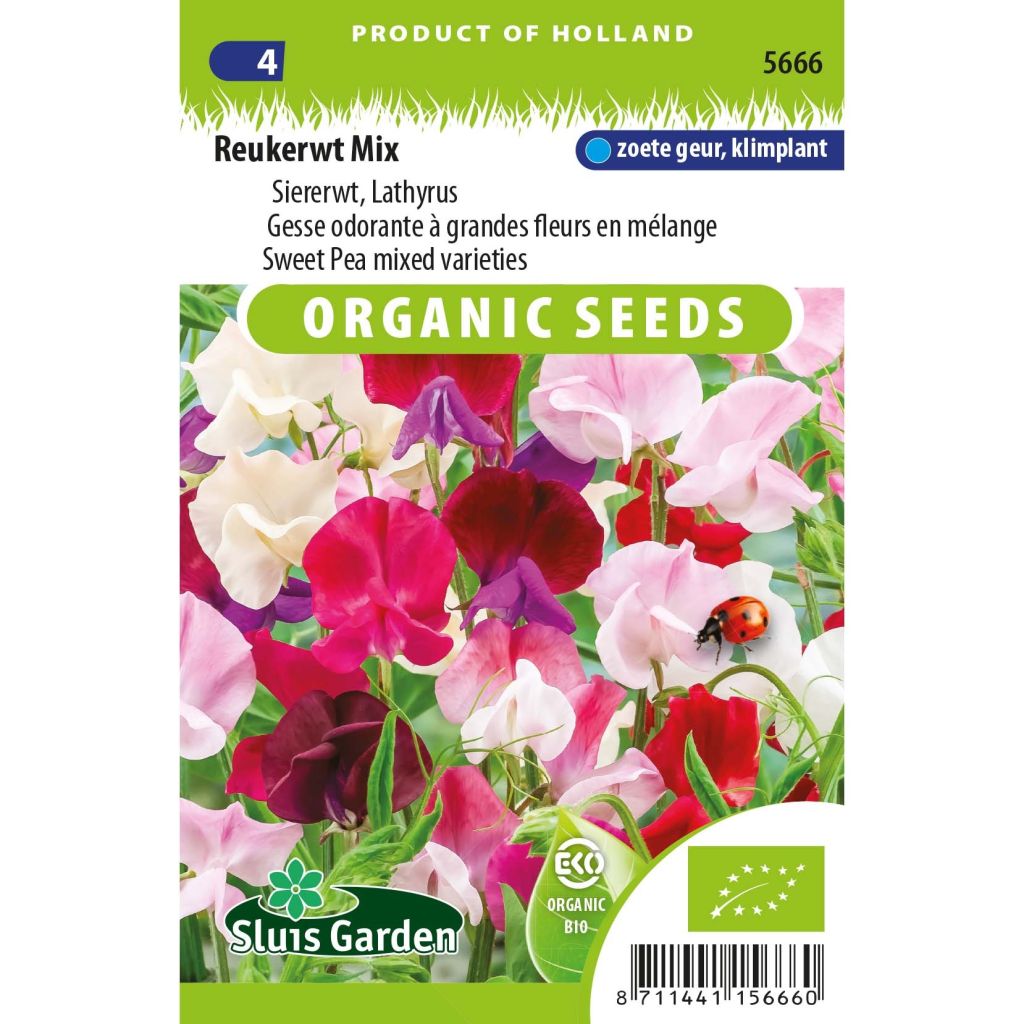

Lathyrus odoratus Mix - Sweet pea
Lathyrus odoratus Mix - Sweet pea
Lathyrus odoratus Mix
Sweet pea
Why not try an alternative variety in stock?
View all →This plant carries a 6 months recovery warranty
More information
We guarantee the quality of our plants for a full growing cycle, and will replace at our expense any plant that fails to recover under normal climatic and planting conditions.
Seed-only orders are dispatched by sealed envelope. The delivery charge for seed-only orders is €3.90.
Description
The Lathyrus odoratus, or Sweet Pea, sought after for its long fragrant flowering, is offered here in the form of seeds from organic cultivation in various colours. These annual, climbing, simple flowers can be sown in spring and bloom throughout the summer if you regularly remove faded flowers. Vigorous and fast-growing, they cover large areas, both on the ground and vertically, and cascade in romantic garlands from hanging pots and baskets. Their fragrant flowers are perfect for bouquets. They should be grown in the sun, in rich and moist soil.
The Lathyrus odoratus is an annual herbaceous plant of the Fabaceae family, native to southeastern Italy and Sicily. Climbing thanks to tendrils, the plant can reach an average height of 1.80m (6ft) and a width of 30 cm (12in) in just a few months, depending on the growing conditions. Its leaves are arranged in pairs on quadrangular stems, with stipules at the base and prolonged into tendrils. They are light green. Flowering occurs from June to August, about 3 months after sowing, lasting 4 to 5 weeks. The papilionaceous flowers are more or less large, grouped in axillary clusters on upright floral stems. They consist of 5 petals, with the upper one, which is also the largest, taking the shape of a standard, while the others have an intermediate shape between the lip and the tube. They emit a fragrance that varies in intensity depending on the varieties. Delicate, it has a sweet floral aroma with soft, honeyed, and musky accents, very feminine. The flower colour varies among plants, adopting shades of white, pink, mauve, blue, violet, red, or salmon. The fruit is a flat pod that twists, expelling its seeds at a distance. It is essential to remove faded flowers, as seed production immediately stops flowering. Sweet peas root deeply in the soil to obtain water and nutrients.
Sweet peas are irreplaceable; their touching and old-fashioned flowering brings a lot of charm to bouquets, hanging baskets, and any support they valiantly colonize in one season. They are equally charming in summer borders, using neighbouring plants or bushes as support. Let them climb a small wire fence, a tool shed, a modest shed, and they will transform them for a summer. They can also create beautiful carpets by mixing different colours. They are inseparable from cottage gardens, like peonies, old-fashioned roses, foxgloves, peach-leaved bellflowers, and columbines. Also, consider pairing them with morning glories and Phaseolus caracalla, for example. They can also be planted in the fertile and watered soil of the vegetable garden, where they provide a good supply of cut flowers.
.
Harvest
Plant habit
Foliage
Botanical data
Lathyrus
odoratus
Mix
Fabaceae (Papilionacea)
Sweet pea
Cultivar or hybrid
Annual
Other Sweet Pea seeds
View all →Planting and care
Before sowing, leave the seeds to soak in a bowl of water for 6 hours. This will improve the speed of germination.
Sow Sweet Peas directly in situ at the foot of a trellis in March-April, in stacks (groups of 2 or 3 seeds) 2.5 cm deep. Leave a minimum distance of 30 cm between two bunches.
When the seedlings have reached the second pair of leaves, cut off the end of each stem to encourage branching.
Regular but not excessive watering will speed up growth. A sunny spot, fertiliser for flowering plants and removal of spent flowers will encourage abundant flowering from June to August.
Beware of snails and slugs, which love to devour young plants.
Seedlings
Care
Intended location
Planting & care advice
This item has not been reviewed yet - be the first to leave a review about it.
Flower seeds
Haven't found what you were looking for?
Hardiness is the lowest winter temperature a plant can endure without suffering serious damage or even dying. However, hardiness is affected by location (a sheltered area, such as a patio), protection (winter cover) and soil type (hardiness is improved by well-drained soil).

Photo Sharing Terms & Conditions
In order to encourage gardeners to interact and share their experiences, Promesse de fleurs offers various media enabling content to be uploaded onto its Site - in particular via the ‘Photo sharing’ module.
The User agrees to refrain from:
- Posting any content that is illegal, prejudicial, insulting, racist, inciteful to hatred, revisionist, contrary to public decency, that infringes on privacy or on the privacy rights of third parties, in particular the publicity rights of persons and goods, intellectual property rights, or the right to privacy.
- Submitting content on behalf of a third party;
- Impersonate the identity of a third party and/or publish any personal information about a third party;
In general, the User undertakes to refrain from any unethical behaviour.
All Content (in particular text, comments, files, images, photos, videos, creative works, etc.), which may be subject to property or intellectual property rights, image or other private rights, shall remain the property of the User, subject to the limited rights granted by the terms of the licence granted by Promesse de fleurs as stated below. Users are at liberty to publish or not to publish such Content on the Site, notably via the ‘Photo Sharing’ facility, and accept that this Content shall be made public and freely accessible, notably on the Internet.
Users further acknowledge, undertake to have ,and guarantee that they hold all necessary rights and permissions to publish such material on the Site, in particular with regard to the legislation in force pertaining to any privacy, property, intellectual property, image, or contractual rights, or rights of any other nature. By publishing such Content on the Site, Users acknowledge accepting full liability as publishers of the Content within the meaning of the law, and grant Promesse de fleurs, free of charge, an inclusive, worldwide licence for the said Content for the entire duration of its publication, including all reproduction, representation, up/downloading, displaying, performing, transmission, and storage rights.
Users also grant permission for their name to be linked to the Content and accept that this link may not always be made available.
By engaging in posting material, Users consent to their Content becoming automatically accessible on the Internet, in particular on other sites and/or blogs and/or web pages of the Promesse de fleurs site, including in particular social pages and the Promesse de fleurs catalogue.
Users may secure the removal of entrusted content free of charge by issuing a simple request via our contact form.

































